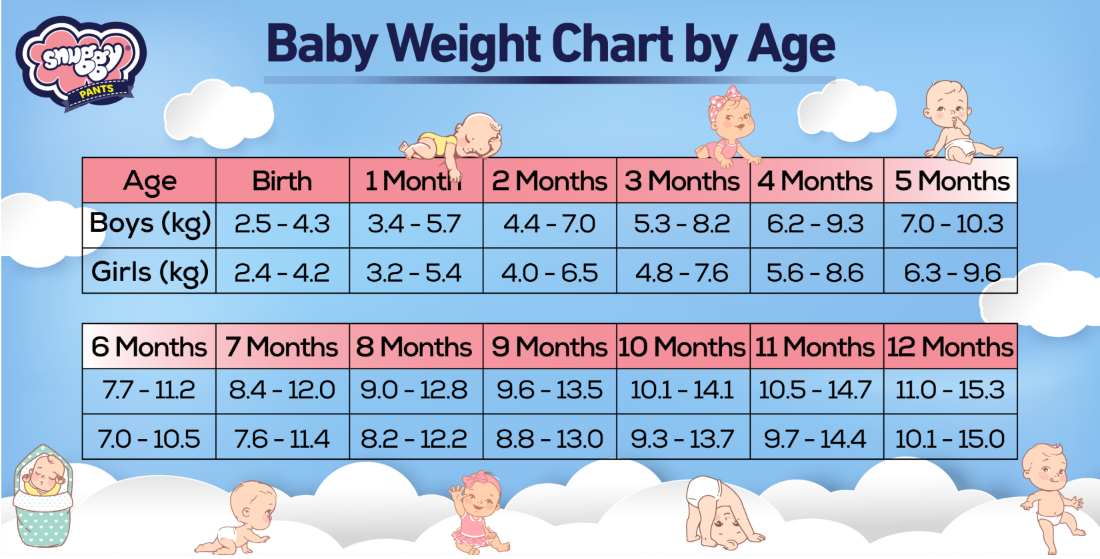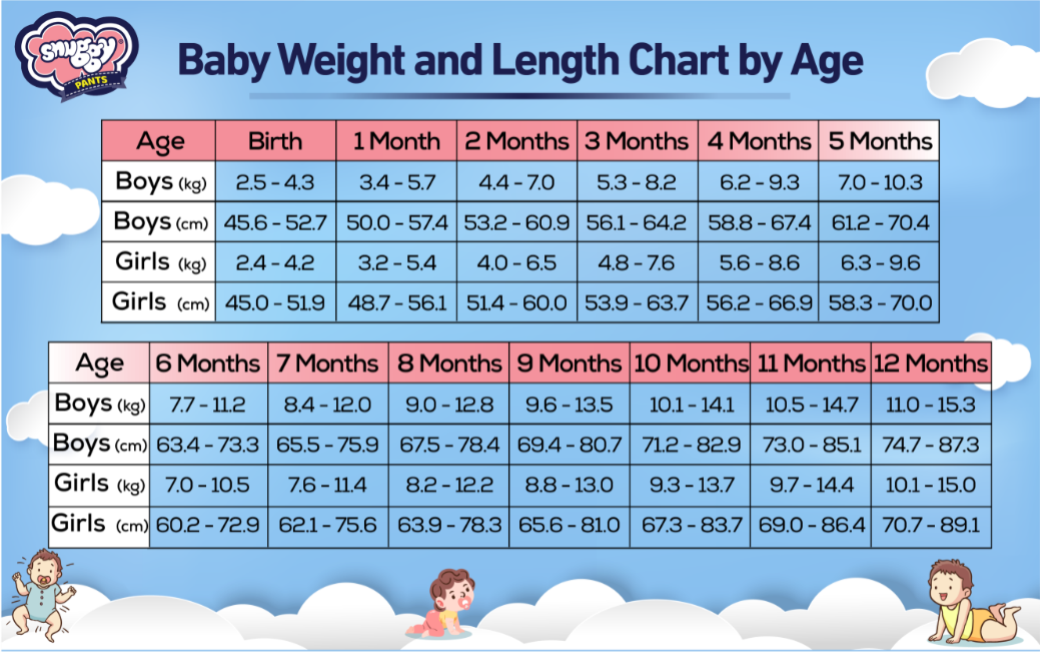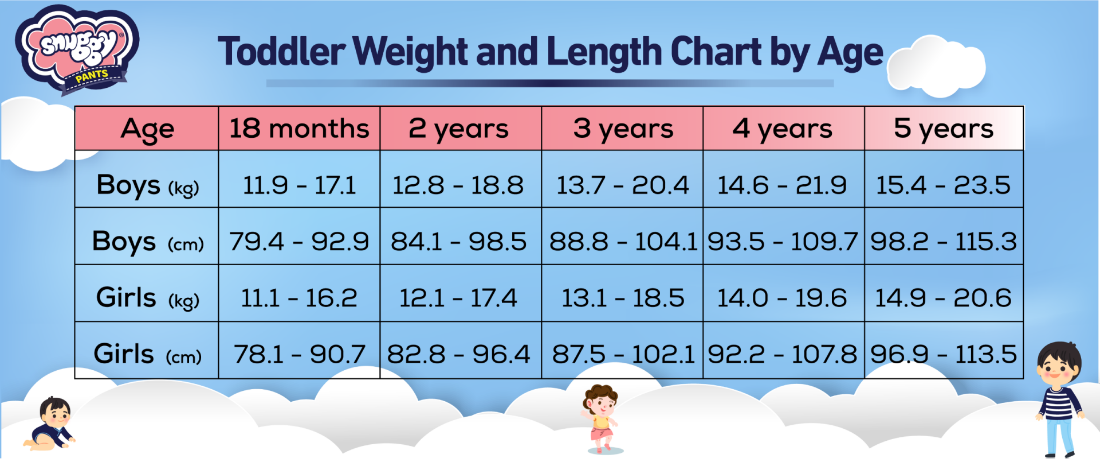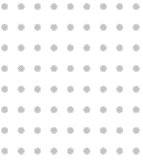From those heart-melting smiles to the sleepless nights, the journey of parenthood is nothing short of incredible. And before you know it, your little babbling bundle will soon take their first step right before your eyes. Here’s the thing- babies grow quickly! That’s why it’s crucial to keep a close watch on their growth. To help you ace this test of parenting, we’ve designed some easy-to-understand growth charts to track your baby’s progress and ensure they are developing healthily. After all, being well-informed and attentive parents is the key to nurturing a happy baby.
But before that…
Why is Measuring Your Baby’s Weight Important, You Ask?
Think of it as your baby’s personal growth report card! Measuring your baby’s weight is essential to ensure they’re not secretly transforming into a mini sumo wrestler or a featherweight champion! On a more serious note, it’s vital for tracking their growth and health. Detecting issues early helps keep your little one on the right track to healthy development and a promising future.
How Do You Read a Baby Weight Chart by Age?
Reading a baby’s weight chart by age may initially seem as intricate as decoding hieroglyphics, but we’re here to make it simple for you. Follow these easy steps:
- Begin by locating your baby’s age on the chart.
- Next, check the average weight for that specific age.
- Now, measure your baby’s weight. If it falls within the indicated range, that’s fantastic! There’s no need for concern.
- However, if your baby’s weight doesn’t align with the chart, there’s no need to panic. It’s entirely normal for babies to grow at their own pace. Nevertheless, it’s a wise decision to consult with your doctor about it.
Infant Weight Chart by Age in Kgs
Tips for Healthy Growth:
Alright, superhero parents, let’s talk about the ultimate question: how to nurture your tiny sidekick’s growth and ensure their baby weight chart by month is right on point! We’ve got a few simple and playful tips for you! This is to ensure your mini-me grows into a happy, healthy human. No superhero powers required
- Make Eating Time Colourful!
Think of meals as mini art projects. Put some colour onto that plate, such as bananas, peas, and carrots, and let the food rainbow shine. Baby’s are attracted bright colours and you know what it mean, right? They’ll want to taste test it too!
- Regular Check-Ups
Your baby’s paediatrician is going to be your best friend during their growth years. Clear all your doubts about your little one’s growth and get expert advice.
- High-Five to Hydration
Ask the doctor when is the right time to start giving your baby water to drink and keep the cups handy. Drinking water or hydration is like a magic potion for growth. Keeping an eye on your little one’s water intake, as suggested by the experts, ensures they stay on track for healthy development. A well-hydrated baby is a happy, growing baby!
- Milk time is party time!
Whether you’re feeding the baby breast milk or the bottle, make it a little party. You can rock, sway, or even do a little dance. It’s like having a dance party during dinner, just for your adorable little munchkin. Go ahead, show off those dance moves, and let the good vibes flow during feeding time! As you enjoy and relish these magical moments, let the baby growth chart be a guide, ensuring that your little one is growing and flourishing beautifully.
- Navigating Weighty Matters
If your little nugget is straying from the average weight on the baby weight chart by month in kg, don’t hit the panic button. Make sure you’re not over-feeding or under-feeding them and consult the experts!
Baby Weight Chart by Age in Kgs
Check out this handy baby weight chart we designed to help you keep an eye on your baby’s growth from birth to their first year. It shows you the typical weight ranges for different ages, making it easier for you to track your little one’s progress and ensure they’re growing healthy and happy.

Child Weight Chart by Age AND LENGTH? Yes, that too!
Keeping an eye on how your little one is growing means not just looking at their weight but also their length. Children’s growth is not a one-dimensional process. It involves the harmonious development of various body systems and structures. By considering both weight and length, you gain insight into how well a child’s body is growing proportionally, which is a key factor in overall health.
And guess what? We’ve made a chart to help you keep track using age and length too!

Tracking Your Toddler’s Weights and Heights
Just when you thought you had parenting all figured out, your baby decides to trade tummy swimming for crawling and furniture demolition! But worry not; use this chart to help track your baby’s growth as they step into toddlerhood, as changes in this stage tend to happen rapidly.

Choosing the Right Diaper by Weight
Let’s shift our focus to a daily essential – diapers! Diapers play a crucial role in ensuring your baby’s comfort, especially considering how much time they spend wearing them. When it comes to choosing the right diaper based on your baby’s weight, you want nothing but the best for your little one. That’s where Snuggy Baby Diapers- the best baby diaper in India– come into play.
Reading your baby’s weight is more than just tracking their growth; it also helps you take care of their needs, including managing their pee and poop effectively. Snuggy Baby Diapers are available in various sizes tailored to your baby’s weight, making it a breeze for you to find the perfect fit.
Phew! We know that all these numbers might seem overwhelming at first, but don’t worry, it gets easier. Feel free to save these charts and use them to ensure your little one is not only growing but also thriving and happy. Thank you for reading, and we look forward to catching you in the next one!
Frequently Asked Questions
What should be baby weight according to age?
Newborns typically weigh between 2.5 to 4.5 kilograms. Weight should increase steadily as they grow, but it can vary.
How much is a normal baby’s weight?
There isn’t a one-size-fits-all answer, but steady growth along the growth curve is a good indicator of healthy weight.
Is 2.5 kg heavy for a baby?
No, 2.5 kg is generally within the normal range for newborns. However, gestational age should be considered.
What is an overweight baby in kg?
Determining if a baby is overweight depends on various factors, not just kilograms. It’s assessed by looking at age, height, and growth patterns rather than a specific weight in kilograms.
How much should the baby weigh per month in kg?
According to the baby weight chart in kg, a newborn typically weighs around 2.5 to 4 kg. During the first few months, infants generally gain 100-200 grams per week. By six months, the average weight is approximately double the birth weight.
Which food increases baby weight?
To support healthy weight gain, provide breast milk or formula as the primary nutrition for infants. As they start solids around 6 months, introduce mashed fruits, vegetables, and iron-fortified cereals. Consult with a healthcare professional for personalized guidance on your baby’s dietary needs.
What is the average baby weight according to age for children?
For infants up to 12 months, the child weight chart provides essential benchmarks. A newborn typically doubles by six months. By the first year, the average weight ranges from 7 to 10 kg. Regular check-ins with the child weight chart aid in tracking and ensuring healthy development.





